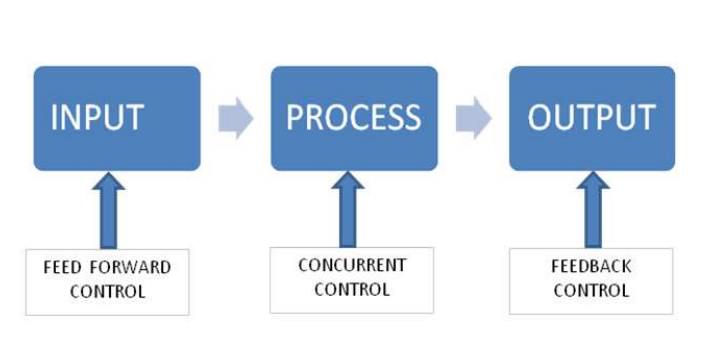Chapter: Principles of Management : Controlling
Types of control
TYPES OF CONTROL SYSTEMS
The control systems can be classified into three types namely feed
forward, concurrent and feedback control systems.

Feed forward controls: They are preventive controls that try to
anticipate problems and take corrective
action before they occur. Example – a team leader checks the quality,
completeness and reliability of their tools prior to going to the site.
Concurrent controls: They (sometimes called screening controls) occur
while an activity is taking place.
Example – the team leader checks the quality or performance of his members
while performing.
Feedback controls: They measure activities that have already been
completed. Thus corrections can take
place after performance is over. Example – feedback from facilities engineers
regarding the completed job.
BUDGETARY CONTROL
Definition: Budgetary Control is defined as "the establishment of budgets,
relating the responsibilities of
executives to the requirements of a policy, and the continuous comparison of
actual with budgeted results either to secure by individual action the
objective of that policy or to provide a base for its revision.
NON-BUDGETARY CONTROL TECHNIQUES
There are,
of course, many traditional control devices not connected with budgets,
although some may be related to, and used with, budgetary controls. Among the
most important of these are: statistical data, special reports and analysis,
analysis of break- even points, the operational audit, and the personal
observation.
Related Topics